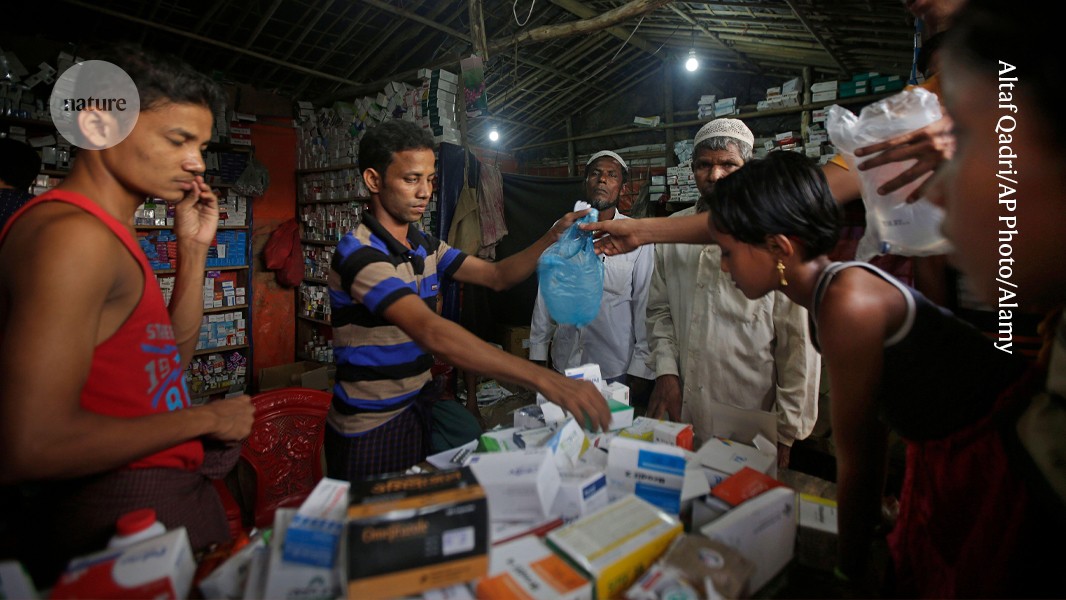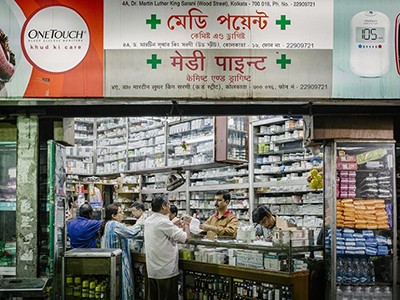This month, world leaders are gathering at the 79th session of the United Nations General Assembly in New York to discuss the problem of bacteria, fungi and protozoans increasingly evolving resistance to antimicrobial drugs. Historically, solutions have focused on high-income countries, even though 4.3 million of the estimated 5 million deaths associated with infections of drug-resistant bacteria occur in low- and middle-income countries. Ahead of the UN meeting, four specialists — from Bangladesh, Brazil, Nigeria and the Middle East — told Nature which changes will be most crucial where they live.
SENJUTI Saha: Bangladesh
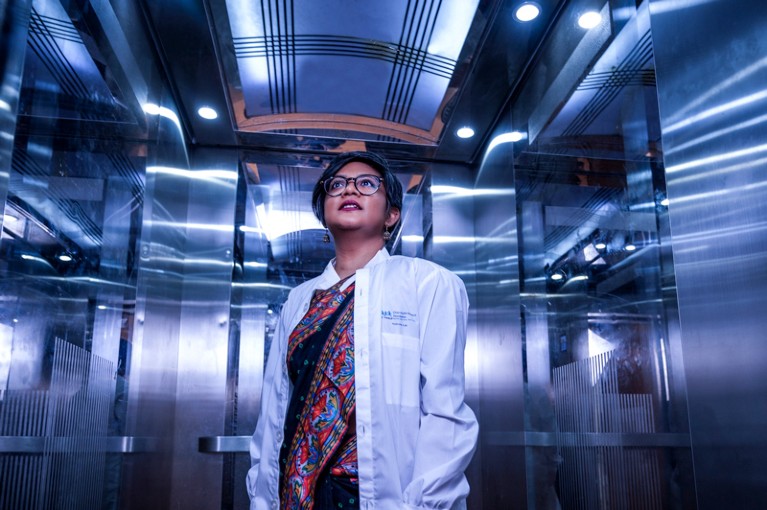
Senjuti Saha sees the need for a global commitment to support data collection on resistance.Credit: Vivan Mehra
For more than a decade, I have seen the impact of antimicrobial resistance (AMR) on people, particularly newborns, at first hand. Bangladesh Shishu Hospital and Institute in Dhaka — one of the collaborating organizations of the Child Health Research Foundation, where I work — is the country’s largest children’s hospital. Here, six out of every ten babies with infections caused by multidrug-resistant Klebsiella pneumoniae bacteria die, often just a few days after being infected.
In Bangladesh, a major difficulty in the fight against AMR is the lack of data on which bacteria are infecting whom, on how the various strains respond (or not) to which antibiotics and on how decisions are made about which drugs to use.
Stop delaying action on antimicrobial resistance — it is achievable and affordable
Bangladesh’s health-care system is unusual in that most people receive treatment in community clinics, diagnostic centres and pharmacies rather than in hospitals. People tend to go to hospitals only when treatment obtained from these other places fails. But because most of the country’s AMR data come from hospitals, government officials, clinicians and microbiologists have a skewed understanding of the problem.
Thanks to biases in the available data, many people think, for instance, that resistance is ubiquitous. Physicians often give patients late-generation or last-resort antibiotics even though early-generation drugs could still work. This in itself might be worsening resistance.
Another issue that affects Bangladesh in particular is the lack of protocols and basic interventions in and around health care that, if implemented, would greatly improve the situation.
For the babies at Shishu hospital, the most effective approach to saving lives is preventing infections from taking hold in the first place. Strategies that could substantially reduce AMR include investing in parental nutrition during gestation (which, in turn, would improve babies’ birth weights and reduce their susceptibility to infection), ensuring that pregnant people receive antenatal and perinatal care and promoting delivery practices that minimize the risk of babies (and birthing parents) getting infections.
What’s needed in Bangladesh — and in low- and middle-income countries more broadly — is a global commitment to support research and data collection on AMR, and investment in the basic interventions that will reduce it.
ANA CRISTINA GALES: Brazil
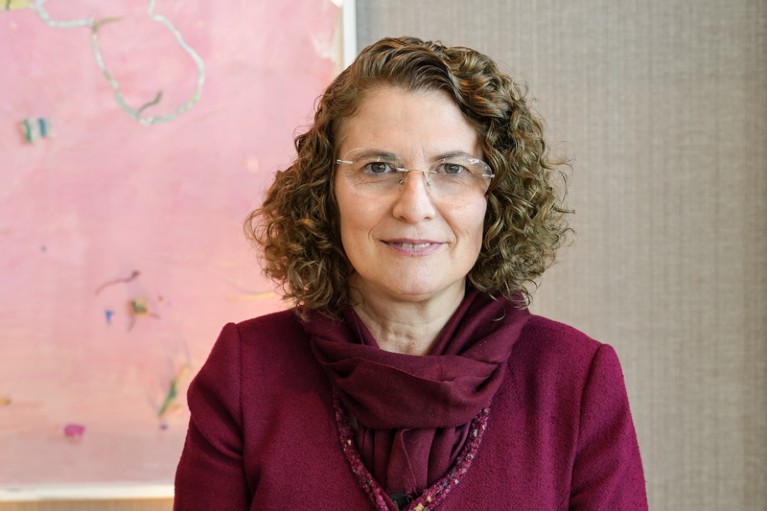
Ana Cristina Gales thinks that even small changes can be transformative for Brazil.Photo courtesy of Ana Cristina Gales
Five years ago, a 15-year-old boy was brought into the hospital where I work in São Paulo, Brazil, after developing an infection. He had cut his ankle while retrieving a kite from a stream. The boy developed a severe, systemic infection caused by methicillin-resistant Staphylococcus aureus and died around five weeks after being admitted.
That boy stuck in my mind, because he was around the age of my two daughters at the time. As a consultant in infectious diseases, I have seen too many people affected by AMR. One of the most frustrating aspects is that this devastating problem could be greatly reduced with relatively simple measures1.
Issues that affect hospitals in Brazil — and in many other countries — include staff members failing to keep surfaces and their hands clean, and failing to isolate people infected with bacteria that are resistant to antimicrobial drugs. Some people have to spend days waiting for beds on stretchers in hospital corridors, making it harder for health-care workers — who are often overworked — to implement basic measures to prevent and control infections. In fact, over the past two decades, investigators have described several cases in which identical antimicrobial-resistant bacteria (of the same clone) have been found in distinct hospitals2 — the implication being that resistant bacteria are being transferred between institutions, perhaps through the movement of patients.
But as illustrated by the case I described, AMR does not occur only in hospital settings. And in Brazil, one of the biggest challenges is people’s failure to recognize AMR as a public-health problem. Most people who don’t work in hospitals lack the knowledge needed to understand what AMR is and how it could affect their health. The country is battling endemic diseases, such as malaria, leishmaniasis and Chagas disease. And over the past 10 years, Brazil has experienced numerous epidemics caused by mosquito-borne viruses, including Zika, chikungunya, yellow fever, dengue and, most recently, Oropouche fever. Such diseases tend to receive more attention than does AMR, which is harder for people to pin to a particular cause.
Antibiotic resistance is a growing threat — is climate change making it worse?
As long as AMR is not seen as a significant health threat at a societal level, it will continue to be overlooked by policymakers and politicians. More positively, however, Brazil has enormous potential to reduce AMR, because it has a universal, decentralized health-care system in place for bringing medical interventions to everyone. It also has national programmes that provide people with vaccines and medications to treat HIV and hepatitis for free. Moreover, as one of the world’s largest producers of animal protein, Brazil could help to lead the reduction of antimicrobial use in livestock rearing. In fact, over the past decade or so, Brazil has already made some key advances when it comes to tackling AMR.
Since a law was introduced in 2010, people have been able to buy antibiotics (for human use) only with a medical prescription. Over the past few years, the government has invested millions of US dollars in research on AMR — and in surveillance, both in state laboratories and in hospitals. Furthermore, Brazil has developed a national plan to reduce the problem using a multisectoral and transdisciplinary ‘One Health’ approach, which is currently under review.
Transforming this plan into a successful programme, similar to the country’s vaccination, HIV and hepatitis schemes, will require more political buy-in and a lot more investment in efforts to raise public awareness. It will also require the integration of priorities across human, animal and environmental health. But clinicians, scientists, government officials and others don’t need access to advanced technologies and new antimicrobials to make an enormous difference. A few, relatively simple changes could be transformative: more parents and other caregivers vaccinating children; more people avoiding the use of antimicrobials when they are unnecessary, such as those used to treat viral respiratory infections; and expanding the nation’s basic sanitation programme, so that every Brazilian city treats its sewage before releasing it into the environment.
IRUKA N. OKEK: Nigeria
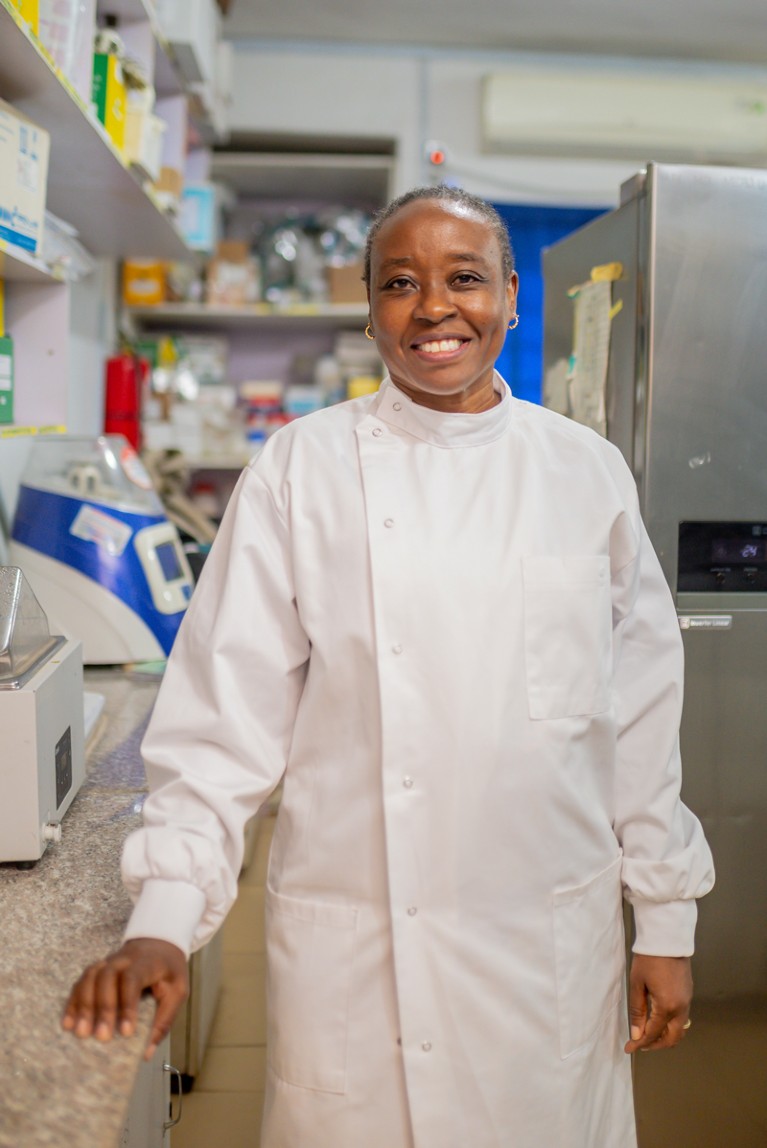
Improved access to health care can help to reduce antimicrobial resistance, says Iruka Okeke.Credit: Science for Africa Foundation
Most Nigerian people have a severe bacterial infection or malaria at least once a year. So they have a real as well as a perceived need for antimicrobials. But people are often unable to obtain the ones they need, or they use antimicrobials without advice from health-care providers. (In 2019, only 41% of Nigeria’s population could access health care easily.) Often, physicians don’t have access to the diagnostic tools needed to inform their decisions about what antimicrobials people should take, or individuals can’t afford those specific drugs. So, although in many settings the use of antimicrobials is excessive or inappropriate, in Nigeria, improving people’s access to health care and medications must be part of any plan to address AMR.
An article in the Lancet Series on Antimicrobial Resistance published in May1 proposes that authorities should aim to reduce the number of deaths caused by AMR by 10% and the inappropriate use of antibiotics in humans and other animals by 20% and 30%, respectively, by 2030. I am convinced that Nigeria could meet these targets using tools available today.
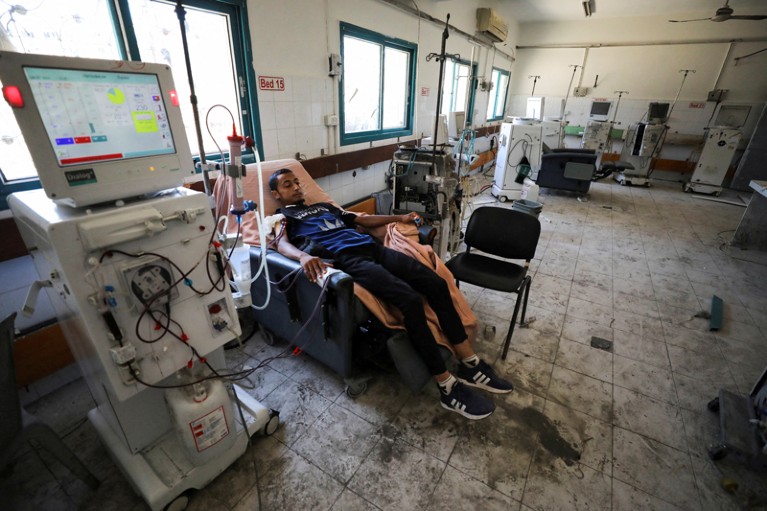
A patient receives dialysis in June at Al-Shifa hospital in Gaza City, which was damaged during the Israel–Hamas conflict.Credit: Dawoud Abu Alkas/Reuters
One-quarter of Nigeria’s population defecates outside, such as in fields, gutters and forests, instead of using a toilet, some or all of the time. And data from a 2024 report3 I was involved in show that most city residents rely on household water from wells or boreholes that is contaminated by faeces. This is the case in Ibadan, where I live. Agents of disease — including typhoid, diarrhoea and cholera — can spread easily, as can non-harmful (commensal) organisms harbouring resistance genes that can be transmitted to pathogenic bacteria. One such commensal microorganism is Escherichia coli, which is typically found in the intestine. Providing people with safe water and better sanitation could reduce the impact of both enteric infections (stomach or intestinal illnesses caused by microbes, such as viruses, bacteria and parasites) and AMR simultaneously, yielding an estimated return of US$5 or more for every $1 spent4.
Modest investment could also improve infection prevention and control practices at health-care facilities — such as promoting handwashing or the isolation of people infected with antimicrobial-resistant bacteria. In 2020, the Nigeria Centre for Disease Control and Prevention released updated guidelines on infection control and prevention. A modelling study5, published in May as part of the Lancet series, indicates that by following such guidelines judiciously, health-care providers could prevent antimicrobial-resistant infections in health-care settings, which currently account for about 300,000 deaths worldwide.
The fight against antimicrobial resistance
Nigeria has been rolling out pneumococcal vaccines since 2014 and rotavirus vaccines since 2022. But coverage, currently at 60% and 49%, respectively (according to data from the United Nations’ children’s charity UNICEF), needs to be extended. Malaria and typhoid-conjugate vaccines are yet to be deployed. Moreover, a global shortage of cholera vaccines has hampered their use in recent outbreaks. All of these vaccines could reduce levels of AMR — by lowering the chance of complications arising that involve bacterial infections, and of people administering antibiotics inappropriately. According to the modelling study in the Lancet series, vaccines could prevent around 180,000 deaths associated with AMR annually5.
In 2017, Nigeria launched an AMR surveillance system. Once this system covers a greater geographical area and more comprehensive data are collected — from people, animals and the environment — investigators will be able to quantify the impacts of each of these tools and support the prioritization of interventions for national deployment.
NOUR SHAMAS: Middle East

Humanitarian relief efforts should prioritize infection surveillance, says Nour Shamas.Credit: Aziz Reguig
I am constantly worrying about whether my mother, who has a recurrent infection of the urinary tract (which is resistant to most antibiotics), will be able to keep accessing the health-care services and antibiotics she needs. She lives in Beirut, Lebanon, and I am always reminding her to keep her passport and antibiotics to hand in case she has to flee in the face of a military attack.
The impacts of political and economic instability and conflict are often overlooked when people consider the factors contributing to AMR. But it’s much harder to implement and maintain the types of intervention often recommended to mitigate resistance, such as restrictions that limit over-the-counter dispensing of antimicrobials, in Lebanon and other eastern Mediterranean countries that are experiencing ongoing conflict. In fact, such an intervention could limit access to lifesaving antimicrobials for those who cannot otherwise obtain them.
The destruction of health-care facilities, schools and other infrastructure as well as people’s livelihoods, and the displacement of both local people and refugees, provide an ideal environment for AMR to increase. In those places facing conflict or receiving refugees, living spaces are becoming increasingly crowded. Many people have lost access to clean water and sanitation, health care, medications and vaccinations. Most have lost wages and many are no longer able to obtain adequate nutrition, and people are more likely to use antimicrobials inappropriately — if they can get hold of them.
Although investment must be made globally in interventions to mitigate resistance, I urge all funders and aid organizations to factor AMR into humanitarian relief efforts. More research must be done on the impact of AMR on communities living in conflict-affected areas, and on context-specific solutions. Extra resources must be devoted to improving supply chains and access to antimicrobials and diagnostic tools, and to improving their use in these regions. And AMR surveillance, infection control and health systems as a whole must be strengthened in conflict-affected areas.


